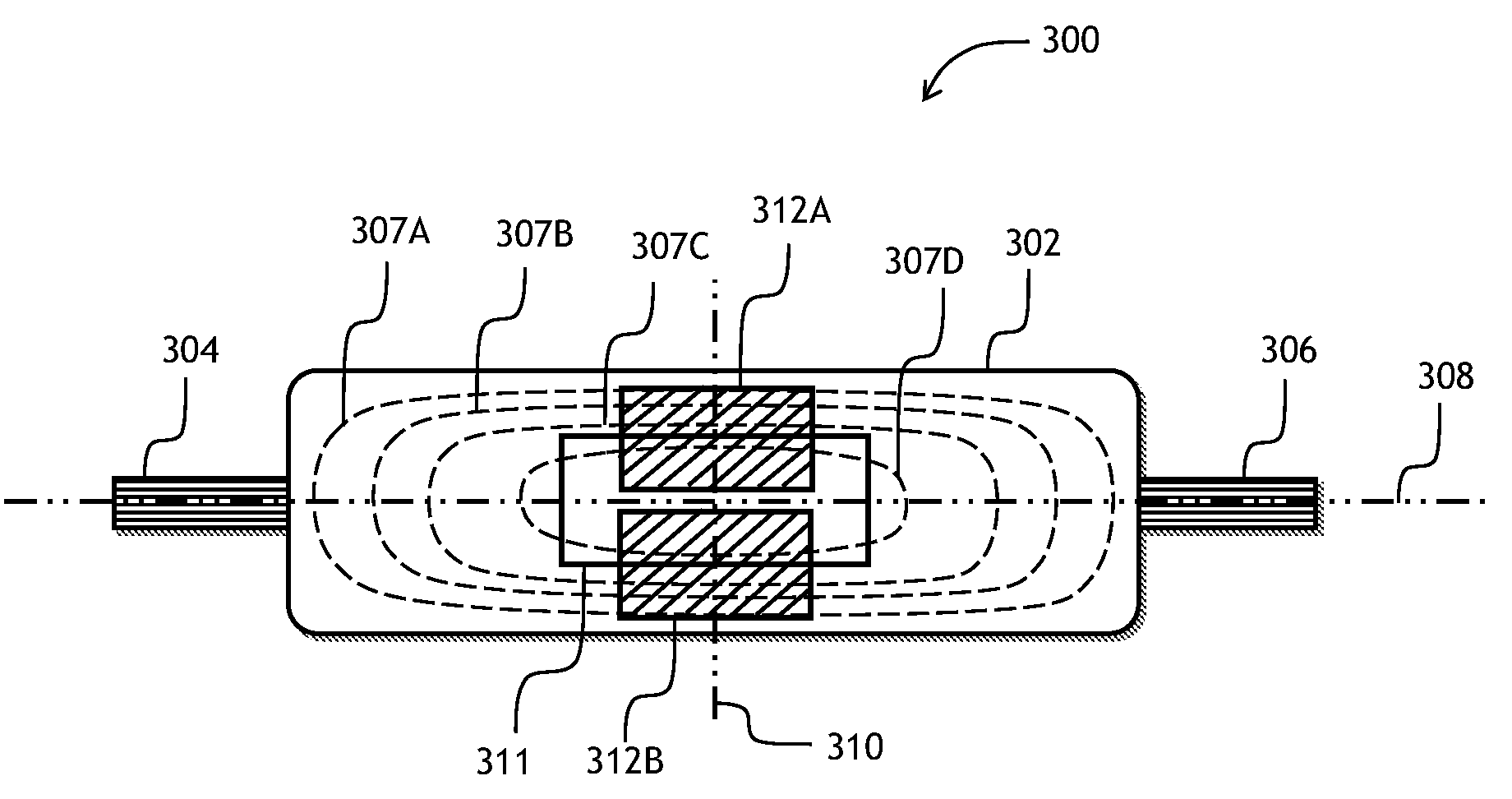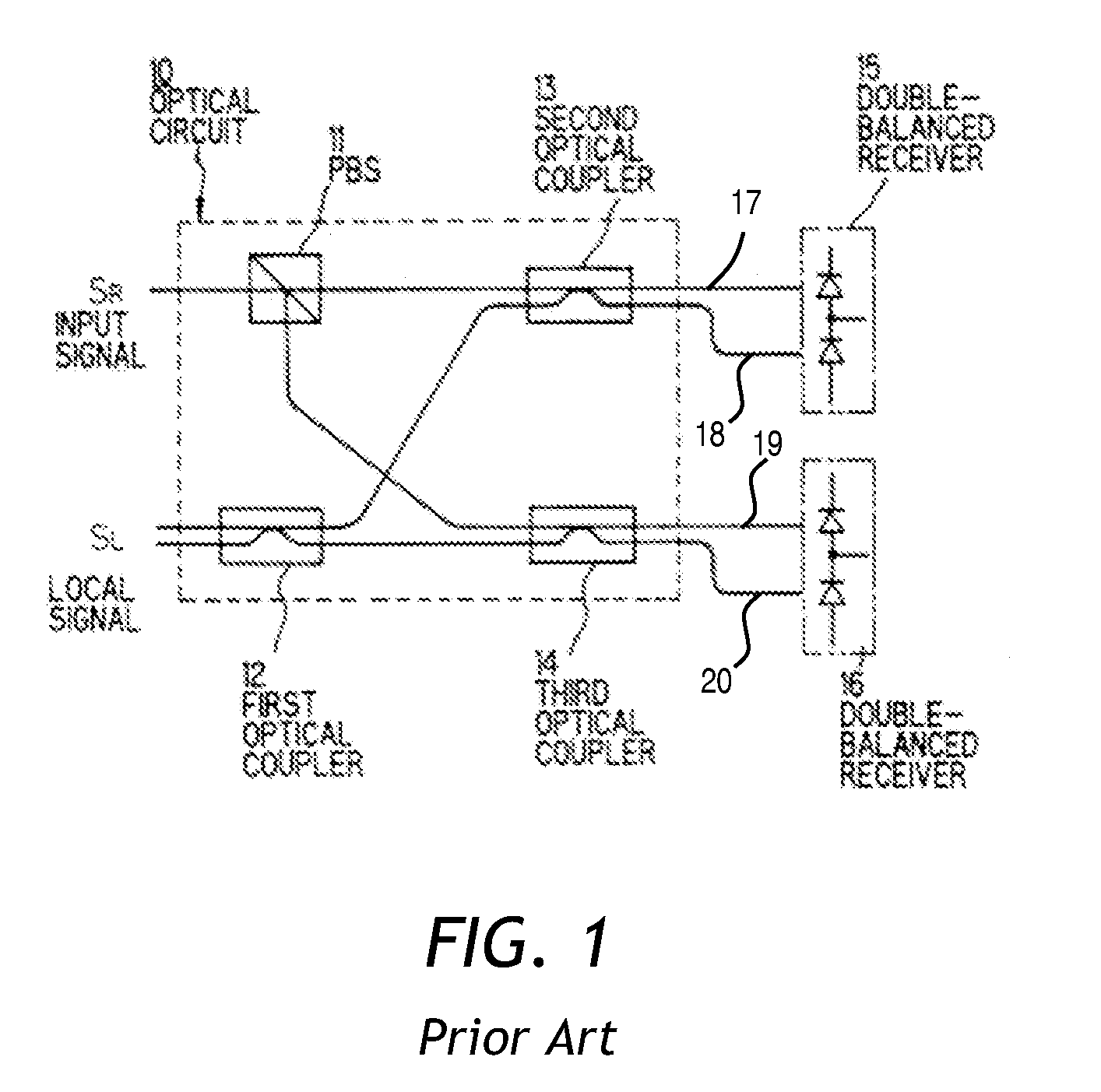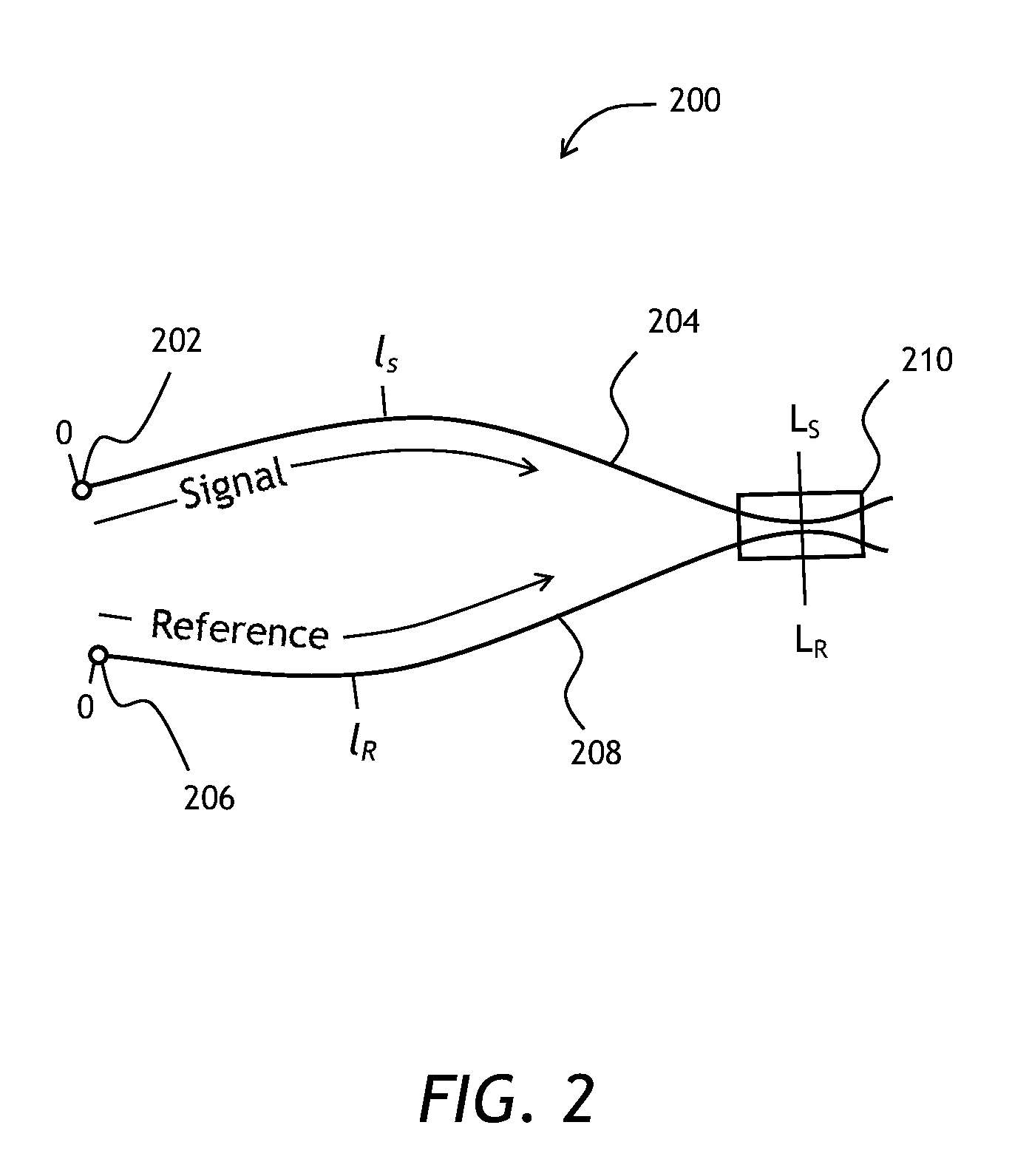Coherent optical mixer and a method of coherent detection of light
a mixer and optical mixer technology, applied in the field of coherent detection of optical signals, can solve the problems of inability to find a widespread application in modem optical communication systems, difficulty in psk encoding and coherent detection methods, reliability concerns of data transmission using psk methods, etc., and achieve the manufacturing tolerances of mixer optics, which are composed of optical interferometers, quite tigh
- Summary
- Abstract
- Description
- Claims
- Application Information
AI Technical Summary
Benefits of technology
Problems solved by technology
Method used
Image
Examples
Embodiment Construction
[0028]While the present teachings are described in conjunction with various embodiments and examples, it is not intended that the present teachings be limited to such embodiments. On the contrary, the present teachings encompass various alternatives, modifications and equivalents, as will be appreciated by those of skill in the art.
[0029]Referring to FIG. 1, a conventional optical circuit 10 of a coherent mixer is shown. The circuit 10 uses polarization diversity arrangement including a polarization beam splitter (PBS) 11 for splitting an input signal SR into two orthogonally polarized sub-signals, that is, TE- and TM-polarized sub-signals, and a first optical coupler 12 for splitting a local signal SL into two sub-signals. Further, the circuit 10 has second and third optical couplers 13 and 14 for mixing one of output signals of the PBS 11 and one of output signals of the first optical coupler 12, respectively. Output signals of the second and the third optical couplers 13 and 14 a...
PUM
 Login to View More
Login to View More Abstract
Description
Claims
Application Information
 Login to View More
Login to View More - R&D
- Intellectual Property
- Life Sciences
- Materials
- Tech Scout
- Unparalleled Data Quality
- Higher Quality Content
- 60% Fewer Hallucinations
Browse by: Latest US Patents, China's latest patents, Technical Efficacy Thesaurus, Application Domain, Technology Topic, Popular Technical Reports.
© 2025 PatSnap. All rights reserved.Legal|Privacy policy|Modern Slavery Act Transparency Statement|Sitemap|About US| Contact US: help@patsnap.com



